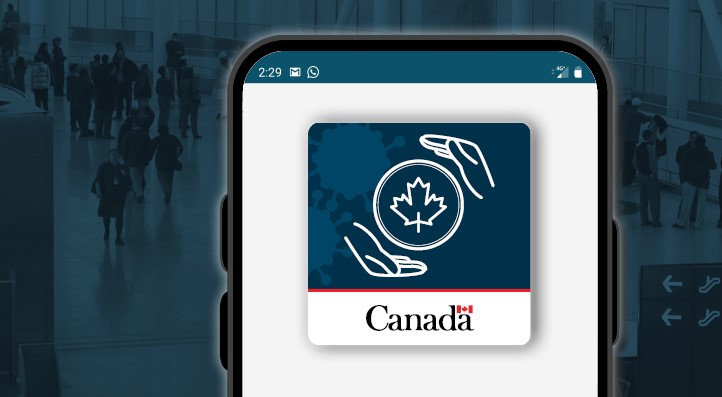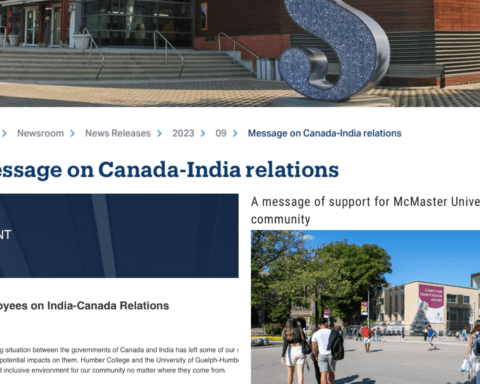The federal government will be requiring all entrants to Canada to self-report their health and quarantine arrangements using the ArriveCAN app prior to arrival. The app itself has been running since April, but the reporting will become mandatory as of Nov. 21, Ottawa announced last week.
The marriage of policy and technology in the fight against COVID-19 has won the government much praise. Earlier in October, Quebec Premier François Legault spoke highly of the app and urged Quebecors to download ArriveCAN’s sister-app, COVID Alert.
COVID Alert has not arrived in Alberta yet, but stakeholders there are vehemently urging the government of Jason Kenney to make it available as soon as possible. The app has already saved the day for one public figure, Deputy Prime Minister Chrystia Freeland, after a notification spurred her to get tested.
With the second wave now a reality, the value of smartphones in the fight against COVID-19 is abundantly apparent. ArriveCAN is now a vital tool in fighting the spread of the disease and protect those coming here. “Submitting information digitally through ArriveCAN will help speed up processes at the border,” said Andre Gagnon, spokesperson for Health Canada.
Travellers are required to provide ArriveCAN their travel and contact information, their quarantine plan and a health self-assessment. Its design is fairly simple. Users are first prompted to provide information on ports of origin and entry as well as the flight number. That is followed by personal information, including name, passport number, and date of birth.
For the quarantine plan, the user has to let the app, and by extension the authorities, know where they will be staying, be it the passenger’s own home or a friend’s home. The health self-assessment is merely a series of questions to better understand the traveller’s situation. The app also asks whether there are vulnerable people at the quarantine location, if the accommodation is a group living arrangement, and whether one can have food delivered, among others.
Upon arrival at a Canadian port of entry, a Canada Border Services agent will verify that the report has been submitted. Failure to disclose this information ahead of time can result in a fine of up to $1,000. Travellers crossing the border who do not submit the information will be considered “a high priority for law enforcement,” reads the Public Health Agency’s press release.
Persons exempt from the requirement to use the app include dependent children or people who are entering on compassionate grounds.
App receives mixed reviews from immigration consultants
Leah Fe Balucan, an immigration consultant in Mississauga, welcomed the news of the app becoming mandatory, calling it “a good move.” She says that three of her clients who travelled during the lockdown said the app was easy to use.
“Before they travel, I normally do a pre-departure orientation with my clients,” Balucan said. “I also give them the quarantine plan when they arrive in Canada, I follow them up and check if they have gone through it.” Balucan specializes in student visas from the Philippines.
While Balucan does not see the app changing the way she does her job, Paulina Harirbafan, also an immigration consultant from Mississauga, says the app might cause some delays. “It could be difficult for some people coming into Canada… [to] navigate it because of the language barrier,” she told NCM.
The app is only available in three languages, English, French and Spanish. Harirbafan’s clients often come from Eastern Europe and the Balkans, and might not necessarily be fluent in those languages. She recalls much confusion when the government introduced Electronic Travel Authorizations (eTA) in 2016.
The eTA is an online pre-screening tool for travellers coming from visa-exempt countries. Passengers found that the process created headaches. According to Harirbafan, some of the headaches came from the language barrier, and she foresees a degree of trouble on the horizon for the ArriveCAN app as well. “They create delays and confusion. They will have to do a proper rollout informing everybody that it is a mandatory thing.”
The government says support is available for anyone experiencing language barriers. “Travellers who may experience difficulty submitting their information through ArriveCAN can access additional information at Canada.ca/ArriveCAN or send an email to: phac.arrivecan.aspc@canada.ca,” Andre Gagnon said.
Mansoor Tanweer is New Canadian Media’s Local Journalism Initiative reporter on immigration policy. An immigrant himself, he has covered municipal affairs and the Brampton City Council in addition to issues relating to newcomers over several years.





